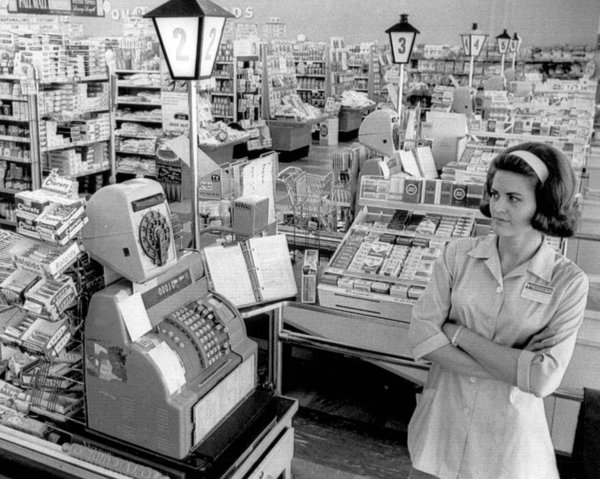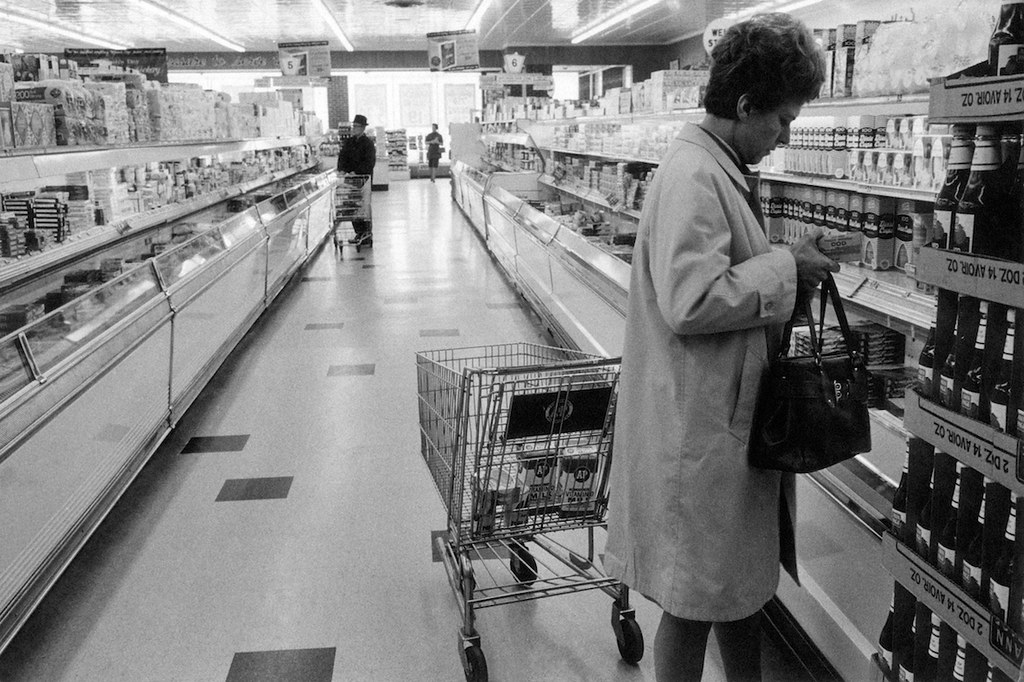Double-digit year-over-year decline portends tough comparisons for food retailers
U.S. retail sales rebounded in March but marked what could be the beginning of a difficult trend for the grocery sector, which saw sales fall by double digits year over year.
Overall retail and foodservice sales totaled $619.1 billion in March, up 9.8% (seasonally adjusted) from February and 27.7% from March 2020, the U.S. Census Bureau reported in advance estimates released yesterday. That compares with a monthly decrease of 2.7 and a yearly gain of 6.7% in February.
Retail trade sales — excluding motor vehicles and parts stores, gas and repair stations — grew 9.4% sequentially to $556.9 billion in March 2021 and gained 26.9% versus March 2020, when the United States declared COVID-19 a national emergency and many non-essential retailers were forced to temporarily shut locations. February 2021 retail trade sales had risen 2.8% month to month and 9.9% year over year.
Grocery stores, meanwhile, eked out a 0.5% month-to-month sales increase (adjusted) in March 2021 to $63.5 billion. However, on a year-over-year basis, sales sank 13.8%, the Census Bureau said. Food and beverage stores overall saw March sales edge up 0.7% to nearly $72 billion, with the sector down 11.8% year over year.
The results represented a sequential improvement from February, when grocery store sales (adjusted) dipped 0.4% (-0.3% for all food and beverage stores) but climbed 10.3% year over year (+11.1% gain for food and beverage stores).
Year-to-date through March 2021, food and beverage store sales are up just 2.3% to $207.3 billion (unadjusted), including a 0.9% uptick to $185.2 billion at grocery stores over the three-month period.
Grocery industry executives and analysts had expected to encounter turbulence in 2021 in the form of tough year-over-year comparisons, as retailers cycle the booming sales gains ignited by consumer stockpiling behavior during the coronavirus crisis. That has led to some investor ambivalence regarding the grocery sector and pushed retailers to rethink performance measurements.
For example, looking ahead, Albertsons plans to gauge its business performance on a two-year stack, given that the pandemic-triggered surge in grocery sales that hoisted 2020 results and will lead to difficult comparisons this year.
“We are manically focused on a two-year stack right now, a two-year stack on growth, two-year stack on share, two-year stack on every element of performance in the P&L so that we know that the business actually is re-baselining to a higher number,” Albertsons President and CEO Vivek Sankaran said last month at Citi’s Retail Madness Virtual Conference. “That’s the way we’re thinking about it.”
For the 2021 first quarter, grocery store visits were down 6% sequentially and 8% year over year.
Indeed, location-based retail foot traffic specialist Placer.ai reported this week that grocery store visits may be normalizing. For the 2021 first quarter, grocery store visits were down 6% sequentially and 8% year over year, following slight gains in the 2020 third and fourth quarters.
“The grocery sector was among the brightest in all of retail as its performance throughout the pandemic illustrated the sector’s unique strength. And while there is real reason to believe that the top players in the sector could have an even stronger 2021, it is also clear that normalcy is returning,” Placer.ai said in its “Grocery Index 2021:Q1” report. “The sector’s high point hit in the pre-pandemic rush in 2020 set a bar that visits could not reach in 2021. However, much of the decline was also centered around the heavy toll from severe inclement weather. The result is a highly anticipated Q2 that could validate optimism or lead many to assume that the sector’s ‘lightning in a bottle moment’ has ended.”

The National Retail Federation (NRF) yesterday reported core retail sales for March 2021 — excluding automobile dealers, fuel stations and restaurants to focus on core retail — as up 7.4% (adjusted) from February and up 17.7% (unadjusted) year over year. That compared with a month-over-month decrease of 3.4% and a yearly increase of 7.2% in February.
“The dramatic increase of 17.7% in March retail sales over the same period last year confirms that a confident consumer is driving the economic rebound, and that should continue through the remainder of 2021,” NRF President and CEO Matthew Shay said in a statement. “American households are clearly feeling the full effect of additional fiscal stimulus, gains in the job market and the reopening of the economy. Although there have been some recent issues related to vaccines, consumer confidence remains high, and an optimistic outlook for the future continues to grow. Retailers remain committed, transparent and emphatic about prioritizing customer and employee safety as they welcome shoppers back into their stores this spring.”
Month-to-month sales in March (adjusted) advanced across retail sectors, the Census Bureau reported, including health and personal care stores, which includes drugstores (+5.7%); general merchandise stores (+9%), which includes department stores (+13%); electronics and appliance stores (+10.5%); apparel and accessories stores (+18.3); sporting goods, hobby, musical instrument and book stores (+23.5%); furniture and home furnishings stores (+5.9%); building material and garden supply stores (+12.1%); foodservice and drinking places (+13.4%); and non-store retailers (+6%), which includes online retailers.
For full-year 2021, NRF forecasts U.S. retail sales to rise 6.5% to and 8.2% year over year to between $4.33 trillion and $4.4 trillion. The association noted that 2020 retail sales gained 6.6% despite the pandemic, exceeding the previous record growth rate of 6.3% in 2004.

Link to article on supermarketnews.com here.

